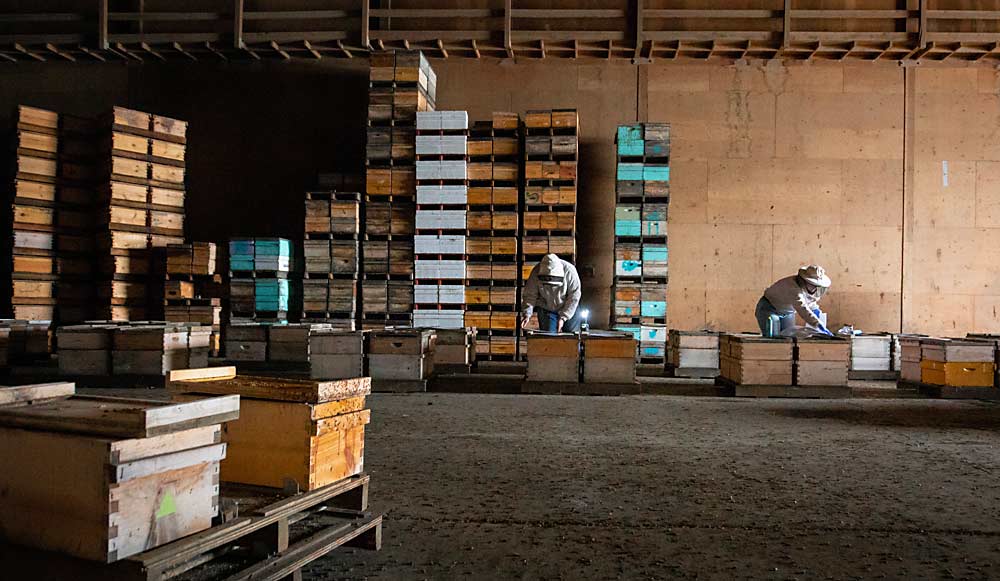
The more Washington State University researchers study cold storage of honey bees, the more benefits they find for the beleaguered pollinators, their keepers and the crops that depend on them.
First, there was protection from the winter elements. Then came varroa mite control. Then, a host of labor savings.
The latest potential benefit to refrigerating honey bees: queen banking.
Funded partially by tree fruit industry research money, Brandon Hopkins, a Washington State University bee entomologist, and his colleagues continue to fine-tune practices involved with placing bee colonies temporarily in cold storage — and continue to discover new potential reasons to do so.
Queen banking may be the most recent facet of the nation’s bee industry to get a boost from cold storage.
A small number of American beekeepers, most of them in Northern California, specialize in producing more than 1 million new queens every spring to requeen existing colonies and establish new ones, and they have a short window of time to do so. Heat, drought and wildfire risk in California constrict timing even further.
However, demand for queens peaks in August, after colonies have rendered their pollination services to almonds, vegetables, seeds and tree fruit.
To ensure supply meets with demand, queen producers “bank” up to 200 queen bees per hive. Living up to their royal title, the queens are high-maintenance and require feeding, adding frames of brood and other chores to keep them alive until beekeepers are ready for them. The warmer the weather, the more work required.
Using storage containers purchased by the Washington Tree Fruit Research Commission, Hopkins has been testing how queen banks would fare in the cold, keeping the bees between 50 and 55 degrees: cold enough to slow down their metabolism but warmer than the typical wintertime storage of 40 degrees.
His results were equal to or better than storing queens outdoors but required much less labor and other inputs, he said. Once the queens are cold, they require almost nothing.
“We put them indoors and we didn’t touch them,” he said.
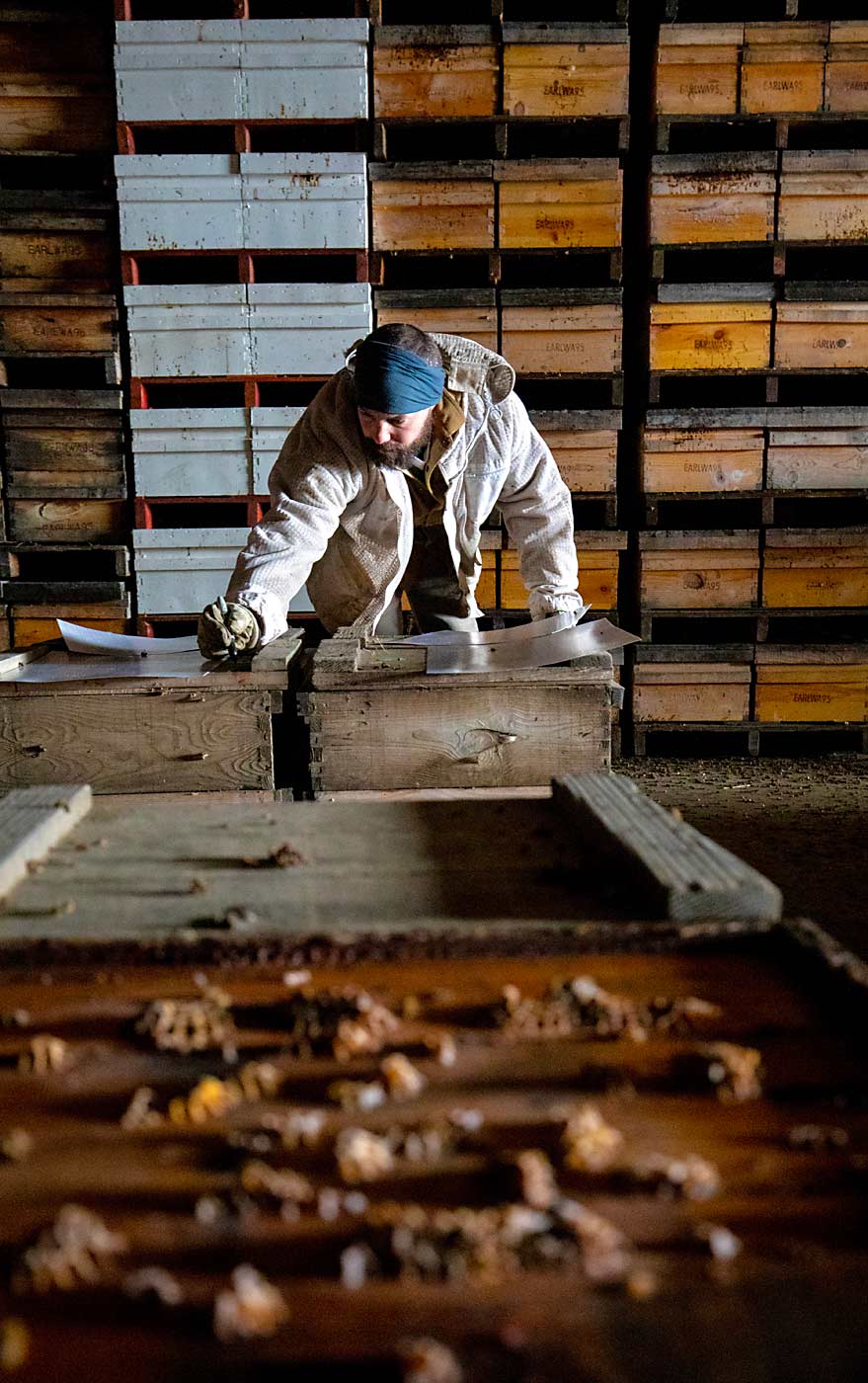
Hopkins’ team was only set up to measure mortality, so they sent queen samples to North Carolina State University’s Honey Bee Queen and Disease Clinic for quality analysis. The lab found no difference in the queens’ weight, sperm counts and other health measurements compared to the queens banked outdoors.
So far, Hopkins’ research indicates a stocking rate of 100 queens per hive is the most effective in indoor cold storage, compared to 50 or 200, though his research continues.
Beekeepers are showing a lot of interest in this type of indoor cold storage, said Danielle Downey, the executive director of Project Apis m., a nonprofit based in Salt Lake City, Utah, that funds bee research. Queen banking could help overcome the 30 to 40 percent of colonies beekeepers lose each year on average.
“If queens could be successfully banked, this could increase queen supply at a critical spring timepoint, and possibly lower costs,” Downey said.
The many benefits
Cold storage also helps bees overwinter and mitigates mites. Hopkins has published two versions of a best-practices guide for both since acquiring the cold storage containers.
Indoor wintering in modern beekeeping has been a well-established practice for more than 100 years. In the past 10 years or so, Idaho has become home to the nation’s largest winter bee population, and it’s not because of natural habitat. Beekeepers are putting their colonies in massive potato warehouses, cinder block buildings or anywhere with heating, ventilation and air conditioning. Idaho has relatively affordable energy costs and is located on the route between North Dakota, where colonies go for honey production, and California, where they begin the pollination season the following year.
The idea is to slow down the metabolism of the population, protecting them from freezing temperatures and mild winters. If a warm spell happens during the winter, bees fly, struggle to find forage, spread diseases and wear themselves out without building brood.
Honey bees also get a health boost from periodic cold storage in spring or fall, when beekeepers will use the cold temperatures to pause the bees’ reproductive cycle for 18 to 21 days and therefore disrupt the progress of the varroa mites, one of the biggest threats to U.S. honey bee colonies. In California, the capital of the bee industry, winter weather is warm enough that bees left in ambient temperatures would otherwise continue to produce capped brood. That gives mite larvae a place to feed and protects them from miticides. Breaking the brood cycle exposes the mites to chemical controls.
Cold storage also gives beekeepers more time to mitigate mites. Treatments require hand labor, three times each week for up to 10,000 colonies at a time.
“If you’re late, you can still kill mites, but a lot of the damage is already done,” Hopkins said.
So far, Hopkins’ research has focused on temperature, though he is interested in expanding it to controlled atmosphere.
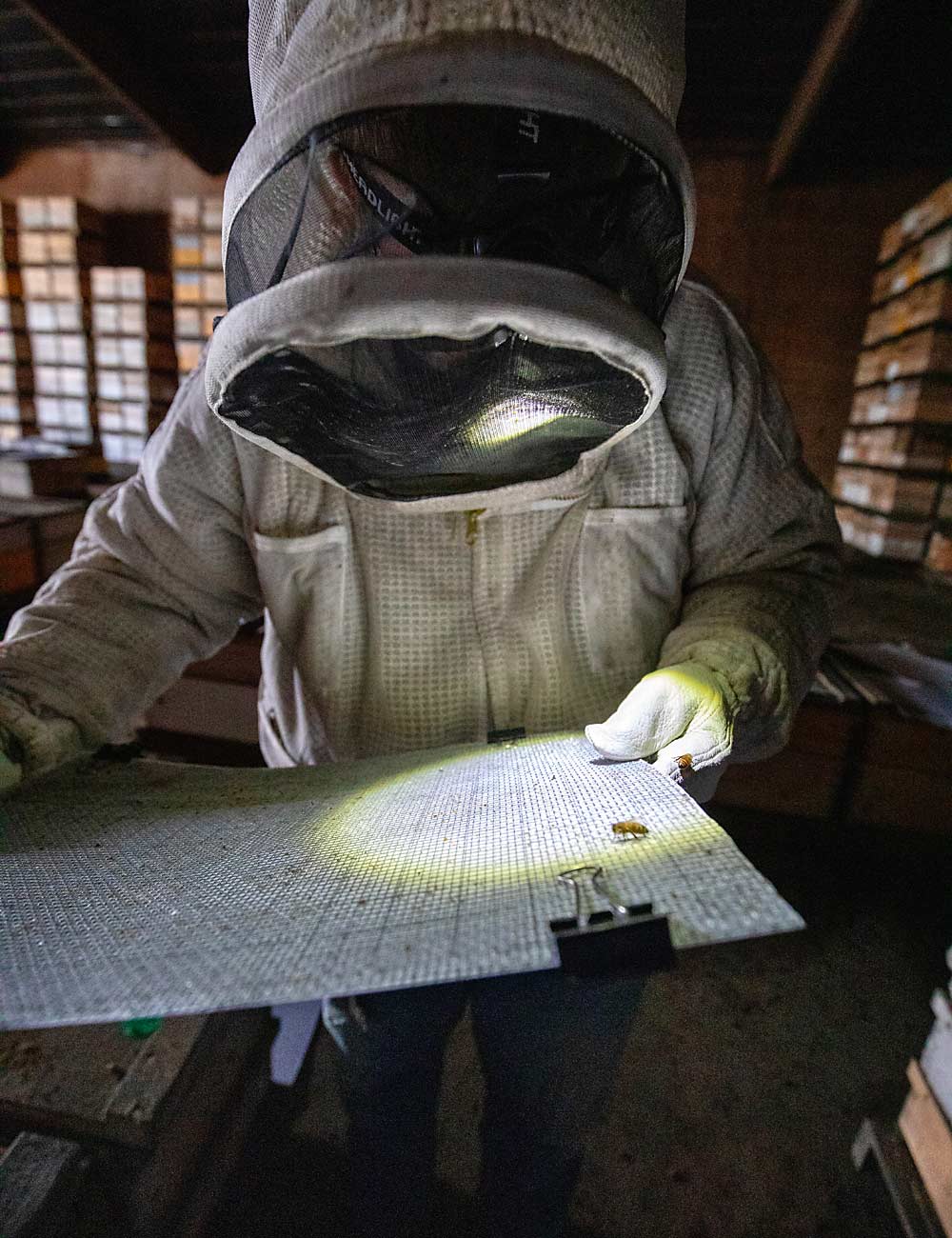
Potential industry participation
Hopkins and research advocates see potential for the fruit industry to participate in maintaining the honey bee life cycle — upon which it relies. In theory, warehouses could use some of their cold storage for a few thousand hives at a time, for periods of about 20 days, either in the winter or summer. It wouldn’t require a huge space commitment, he said, just a little extra room to diversify at an opportune time.
But the timing is tricky, said Eric Olson, a former beekeeper and self-appointed advocate for honey bee research efforts. Before he retired from beekeeping, Olson used indoor controlled-atmosphere storage at his Selah, Washington, cherry orchard.
Winter storage would need to start in November, when fruit warehouses are at their peak activity. There is more potential for a small-scale, three-week brood break storage period after pollination and before honey production in Eastern Montana or North Dakota, Olson said.
To find out more about indoor honey bee storage, visit: projectapism.org/indoor-storage-of-honey-bees.html.
—by Ross Courtney

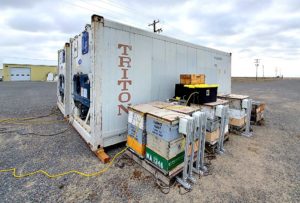
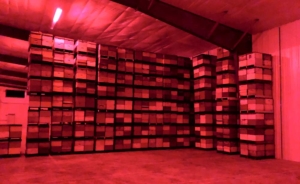





Leave A Comment